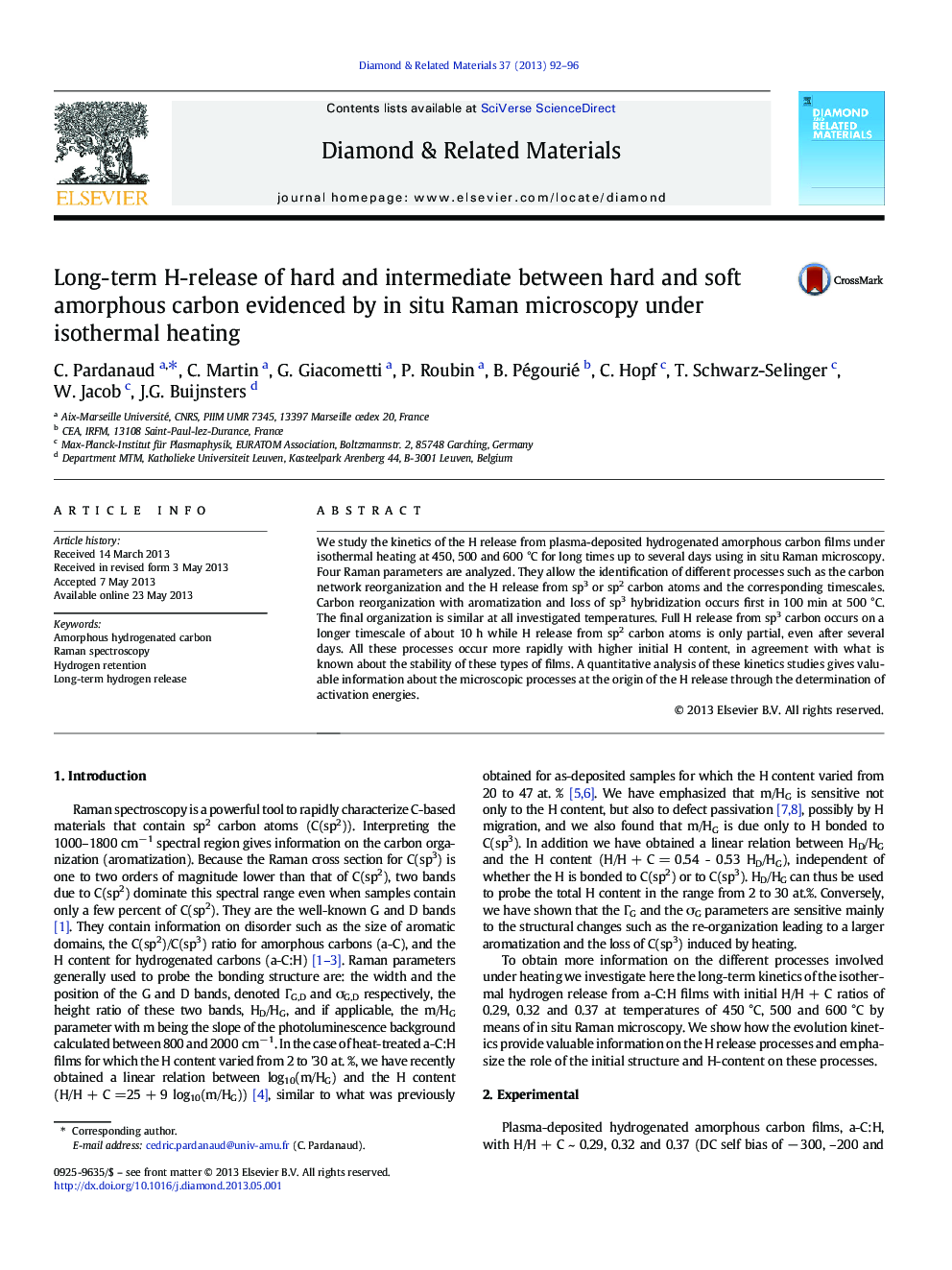| Article ID | Journal | Published Year | Pages | File Type |
|---|---|---|---|---|
| 700745 | Diamond and Related Materials | 2013 | 5 Pages |
•We study the kinetics of the H release from PECVD a-C:H.•These films were heated at 450, 500 and 600 °C for long times up to several days.•Their thermal evolution was followed using in situ Raman microscopy.•The initial C(sp3 )/C(sp2 ) ratio can significantly changes the H release kinetics.
We study the kinetics of the H release from plasma-deposited hydrogenated amorphous carbon films under isothermal heating at 450, 500 and 600 °C for long times up to several days using in situ Raman microscopy. Four Raman parameters are analyzed. They allow the identification of different processes such as the carbon network reorganization and the H release from sp3 or sp2 carbon atoms and the corresponding timescales. Carbon reorganization with aromatization and loss of sp3 hybridization occurs first in 100 min at 500 °C. The final organization is similar at all investigated temperatures. Full H release from sp3 carbon occurs on a longer timescale of about 10 h while H release from sp2 carbon atoms is only partial, even after several days. All these processes occur more rapidly with higher initial H content, in agreement with what is known about the stability of these types of films. A quantitative analysis of these kinetics studies gives valuable information about the microscopic processes at the origin of the H release through the determination of activation energies.
